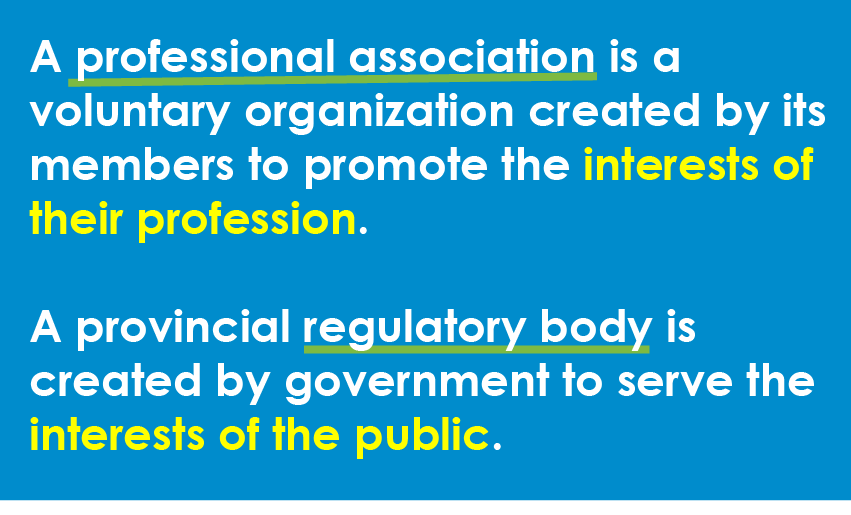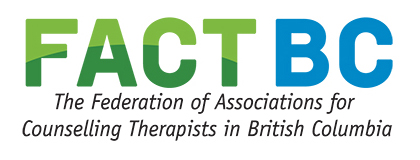What’s the difference between a professional association and a regulatory body?
A professional association is a voluntary organization created by its members to promote the interests of their profession via advocacy for its membership and via the provision of professional supports such as liability insurance plus training and networking opportunities. Such an association is often therefore described as self-regulating when it has procedures for providing some public accountability by handling complaints against its members. This puts the association into a position of conflict of interest, and often provides only partial protection for the public.

A provincial regulatory body is created by government to serve the interests of the public. It is given legal responsibility for setting and enforcing the qualifications and conduct of the professionals it regulates and it provides both standards of ethical behaviour and accountability to the public. A regulatory body usually has a Board of Directors composed of members of the profession plus members of the public, plus a Registrar and support staff. Normally, a regulatory body involving multiple professions will operate with internal, profession-specific panels which include members of a profession as appropriate, to ensure that the profession’s views are respected and reflected in the standards and operation of the overall body.
In Canada, the regulation of a profession like Counselling Therapy primarily takes the form of title protection in which only practitioners included in the regulatory body are allowed to use a particular title (or titles) to describe their work. Such titles are often identified via adjectives such as “Registered,” or “Certified” (or “Licensed” as under the new BC Health Professions and Occupations Act) attached to the name of the regulated profession – e.g. “Registered Nurse.” Being able to use such a restricted title allows potential clients to clearly identify a practitioner who is a member of the regulatory body in contrast to other, unregulated practitioners.
A separate facet of health profession regulation is access to restricted acts — procedures or actions which could cause substantial harm if not done correctly and therefore allowed only for some professions. Examples of restricted acts would include:
- breaking the skin, as with injections or surgery — granted to physicians, nurses, dentists, and acupuncturists (these lists may not be exhaustive);
- prescribing or dispensing medication — granted to physicians, nurse practitioners, dentists, optometrists, midwives, podiatrists, naturopaths, and pharmacists;
- working with partially clothed clients— granted to physicians, nurses, massage therapists, and acupuncturists.
Despite the fact that our clients are often in a very vulnerable state, our counselling and psychotherapeutic work may not end up being defined as a restricted act. On the other hand, some provinces currently do consider psychotherapy with seriously disordered clients to be a restricted act.
Once a profession is formally regulated, the potential conflict of interest between trying to provide public safety while simultaneously supporting its membership, is removed. Then a professional association can focus more clearly on promoting the profession, advertising and education of the public and supporting its members in other ways.
